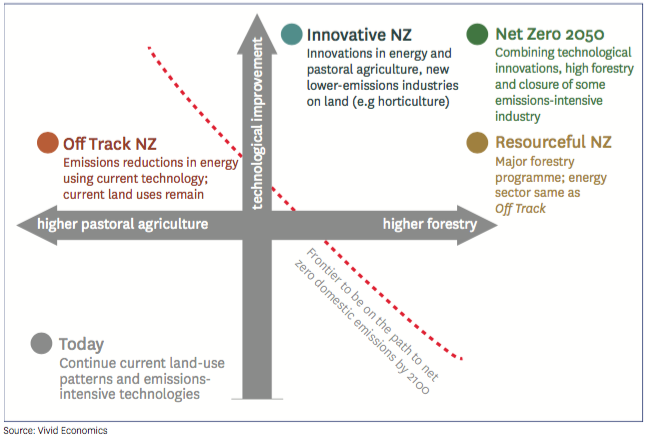Today sees the release of a groundbreaking report on how New Zealand can tackle climate change. Net Zero in New Zealand, by London-based consultants Vivid Economics, explores New Zealand’s potential to become a net zero emissions nation. (Wondering what the hell that means? Read on to find out.)
Significantly this report was commissioned by a cross-party group of MPs with members from all parties in Parliament (GLOBE-NZ). It was funded by a number of external funders, including the Morgan Foundation. We are very pleased to support this project, and applaud the GLOBE-NZ group for their cooperation and leadership.
This report presents an opportunity for New Zealand to find common ground on climate policy and a coherent long-term plan. It also demonstrates how the imperative of a zero carbon future has moved into the mainstream.
Why net zero?
Greenhouse gases, especially carbon dioxide, stick around for a looooong time. The CO2 we emit by burning fossil fuels will linger in the atmosphere and oceans for thousands of years – it accumulates.
The upshot is that global temperatures will not stop rising until we reduce these emissions to zero. If there are residual emissions we can’t reduce, these need to be countered with ‘carbon sinks’ that suck CO2 out of atmosphere. There’s one simple technology that already does this – you might know it as a tree.
Not all greenhouse gases are long-lived. Methane, for example, only lasts in the atmosphere for around 10 years on average. These short-lived gases don’t accumulate and therefore emissions don’t need to go to zero to stop temperatures from rising. But the more we can reduce the rate of these emissions, the more we can take the heat off.
These distinctions are important, but ultimately studies indicate we need to get to zero net emissions overall in the second half of the century to keep global warming well below the agreed limit of 2°C. This target is what the world signed up to in the Paris Agreement, and to act in accordance we need to get on our own national path to net zero emissions. That’s what this report is about.
Can we do it?
Yes we can. The report has two detailed scenarios, Innovative NZ and Resourceful NZ, that put New Zealand on track to achieving net zero emissions in the second half of the century. As the figure below shows, these scenarios differ in how strongly they drive technological improvements versus higher land-use conversion to forestry. The report also discusses how, if we were to combine high ambition and optimistic developments on both those fronts, New Zealand could hit net zero emissions by 2050.
Low-hanging fruit: tasty, but not a full meal
There are several things that all the pathways have in common, including: major energy efficiency improvements, continued progress towards a fully renewable electricity system, significant electrification of the light vehicle fleet, and adoption of more efficient farming practices. As the report notes, these are things that virtually every country needs to be doing to get on track to net zero emissions.
These are all likely to be low (or in some cases negative) cost opportunities, especially when we consider the co-benefits they would bring (e.g. better health and wellbeing from fewer vehicle emissions). This doesn’t necessarily mean they are ‘easy’ and will happen of their own accord – for example, there are ample energy efficiency opportunities today with a high return on investment, but these don’t happen due to a range of non-economic barriers. Nonetheless, we can think of these things as the low-hanging fruit. Pursuing them will be part of any credible climate policy.
However, a key message from the report is that pursuing these opportunities alone – as the Off Track NZ scenario does – is not enough. To put New Zealand on track to net zero emissions, we need to pursue larger changes in technology and land-use. The Innovative NZ scenario focuses more on the former, while Resourceful NZ focuses more on the latter. We’ll explore these scenarios in more depth in our next blog post.
Continuing the conversation
This blog post is the first of a series unpacking and discussing the Net Zero in New Zealand report. If you haven’t already, follow us on Facebook or subscribe to our email list to stay in the loop.
We want to hear from you – what do you think of the report and its findings? What aspects do you want to learn more about? Comment below or on our Facebook page and let’s get this critical conversation about New Zealand’s future going.


